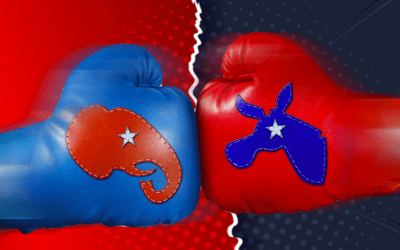There are many different types of teams; executive teams, administrative teams, project teams, taskforce teams, sales teams… Teams can be from many different types of organizations; for-profit, not-for-profit, community service, even family. There is one thing that ALL teams experience; pressure points. How a team identifies and deals with stressors, conflicts, personality
clashes, and other dynamics often spells the difference between success and failure.
We have identified 21 different pressure points in 8 different indexes and have a report that measures and reports them. We do this for both individuals and for the entire team. In a separate program, we give suggestions on how to handle these pressure points. If you want to self-assess your stress via these pressure points, use the table below to self-score your stress level
Team Pressure Points Can Be Used to Strengthen Your Team
The first step to strengthening any team is to first understand and measure pressure points that negatively or positively affect team success. Research demonstrates that some stress or pressure is a good thing. It’s when that pressure surpasses some point that it leads to dysfunctional outcomes. So, what are these pressure points? Let’s take a look.
Demand Index
Stress can come from poorly designed jobs, excessive workloads, or when skills of staff do not meet the needs of the job or organization. There are two different factors we measure to assess this:
- Time Management – how the person or team uses their time to accomplish the job; how effective and efficient have they prioritized and worked on accomplishing the job.
- Competency Job Match – how well the skills and competency of the individual matches the needs of the job.
Effort-Reward Balance Index
How effective is the match between the effort exerted by the individual and the reward they receive from the organization? The power of any reward is always something that is specific to that individual. The extent there is a poor match is the extent the balance is lopsided and causes stress. We measure two components to assess this balance:
- Workplace Meaningfulness – the value the individual believes they bring to the job. This is usually how rewarding the work itself is to the individual. Is it something they are passionate about or something they are doing because it brings them pleasure.
- Workplace Recognition & Reward – the extent the person feels rewarded by their supervisor or the organization.
Control Index
This is the extent a person believes their authority (decisions they can make) matches their responsibility (the extent they will be held accountable for work outcomes). The greater this is out of alignment, the less the person feels in control of their job and the more stress they experience. There are two factors that contribute to this Control Index.
- Workplace Involvement – how involved are people in the discussion and decisions regarding tasks, direction, or how to job is actually done. Are they told what to do or asked their opinion before decisions are made and actions taken?
- Workplace Empowerment – the extent individuals have autonomy and authority to actually make decisions. Not just “lip service,” but actual power and control over the decision.
Organizational Change
Change affects different people and behavioral styles in different ways. Organizational change deals with change related to personnel, technology, procedures, or structure. Some styles welcome change, while others resist it. The extent an organization is experiencing changes from these many factors can be very stressful.
- Organizational Communication – examines how the change is communicated within the organization; through policies, procedures, word-of-mouth, technology…
- Organizational Evolution – is the change gradual or sudden? The more sudden, usually the more stressful.
- Organizational Vision – the extent an organization has a future vision and how clearly that vision is communicated to staff. The more people have a clear understanding of an organization’s vision, the less stress they usually experience.
Manager-Supervisor Index
The relationship between the manager and their staff as well as how supportive management is of staff is exceedingly important. If it is not accomplished appropriately, it can be very stressful.
- Management Awareness – is the extent the management is aware and understands the needs of staff.
- Management Style – is the approach management takes to interact with, reward, and manage staff
Social Support Index
The extent management and staff are supportive of each other is crucial for success in any organization. The extent this support is available, delivered, and clearly communicated has a significant impact on stress experienced throughout the unit.
- Avoidance – intentionally or non-intentionally ignoring a situation or conflict between people and / or organizational policies/procedures/structures.
- Cooperation – the extent people work together to achieve common goals.
- Frustration – the extent people are upset or bothered by not accomplishing activities and goals.
Job Security Index
Is the extent people are either concerned that they will no longer have a job (and the stress that brings) or concerned about the speed (too slow or too fast) at which they experience advancement within the organization.
- Opportunity – the extent they have the chance to success on the job or advance to other positions.
- Job Stability – is the extent the person is concerned about their job.
- Workplace Trust – is the extent there is the need to be guarded on what you say or the ability to say what is on your mind without being concerned about negative outcomes.
Stress Symptoms Index
The extent the stress you are experiencing is having an impact on various aspects of you as a person.
- Physical Stress Symptoms – low energy level, frequent illness, etc.
- Emotional Stress Symptoms – feeling overwhelmed, anxious, etc.
- Cognitive Stress Symptoms – memory or judgement problems, etc.
- Behavioral Stress Symptoms – eating/sleeping, procrastination problems, etc.
Next Steps To Lessen Team Pressure Points
Complete the self-assessment in this article or contact us for a more formal analysis and fuller report. Either way, it is necessary to take action to decrease stressors that are getting in the way of your team’s success. Look at those stressors you scored 4 or 5 on to determine where the greatest need of intervention occurs. If you are the manager, look at things you can do to decrease the stress. For example;
- Bring your staff in and ask their advice on various issues or how to decrease their level of stress. You will be positively affecting the Control Index by increasing their Workplace Involvement and Workplace Entitlement.
- Look at the extent you are rewarding your best performers or demonstrating to them how important they are to you and the organization. You will be affecting their Effort-Reward Balance Index by adding to their Workplace Recognition & Reward.
- Look to see how you are dealing organizational changes. Is the vision and direction clear and clearly communicated? Clarifying the vision will decrease stress caused by aspects of the Organizational Change Index.
If you are a staff person, look at several things to see what you can do to decrease your stress. For example;
- Take some action regarding the Social Support Index. Volunteer to give support to others or ask someone to mentor you and give you the support you need. Most people will be flattered if you ask them to mentor you and will say “Yes, of course” to your request.
- Look at how you are using your time and how you are prioritizing what needs to get done. Reprioritize and check with your manager to make sure your priorities are more in-line with needs. Your Demand Index stress with decrease significantly.
- If you are not sure where the organization is heading, ask your supervisor. If they don’t know, go with them to ask their supervisor. Your answer will help you decrease stress measured by the Organizational Change Index. If you get an answer, you now know the vision. If you don’t get an answer, you now know you are not alone in not knowing the vision of the organization. Either way usually decreases stress.
Hopefully, you have found this article useful in better understanding the Pressure Points you are experiencing as well as those experienced by your team. Take some action! Work internally or externally, with us or others, to create the appropriate level of stress. It will go miles in helping you meet your personal goals as well as the goals of the organization.





